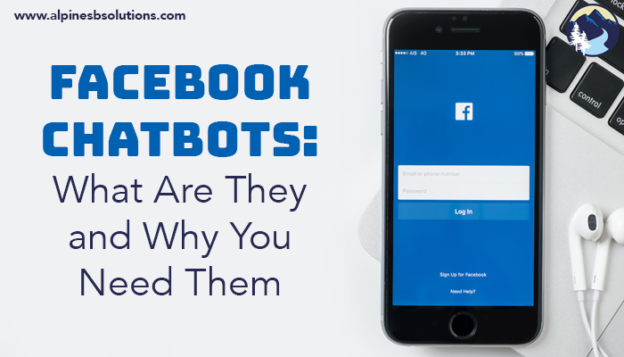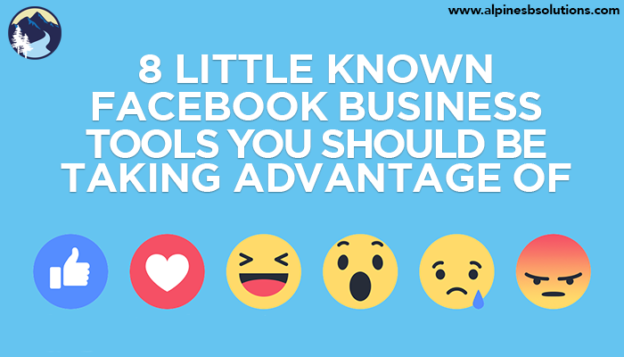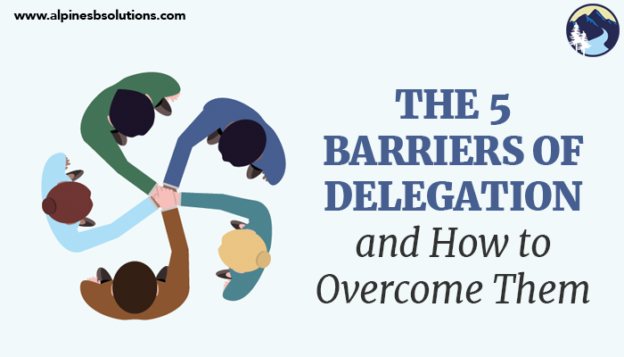Celebrities can (sometimes) do more than entertain. Occasionally, their stories and struggles can offer us insight as we work to build our own dynasties in our niche. Looking at their shortfalls and success can help us gain valuable insight on what it truly means to be a leader.
- Oprah Winfrey – Leaders need patience
Oprah Winfrey is one of the most successful rags-to-riches stories of our time. Born into poverty, she overcame personal challenges and found her first media job at age 19. It took several years before she launched her talk show, and several more before her own network found success. When she created her network, everything was in place for immense and rather immediate success. She had the masses of fans. She had the industry experience. She was highly networked. She could afford to help finance it. But the network took years to take off. Even Oprah Winfrey, a queen in her industry, needed time to make things happen.
As you lead your organization, try not to get too discouraged over setbacks. Perseverance is important to getting your company where you need to go. Your staff looks to you for guidance and encouragement. Lead the way with a determined enthusiasm and dedication to working to get your company where it needs to go.
- Bear Grylls – Leaders encourage risk taking
 Bear Grylls is a well-known adventurer, writer, and TV personality. In his show “Running Wild with Bear Grylls” he takes a new celebrity on an adventure, encountering obstacles from crocodile infested waters to repelling down cliffs. As he coaches celebrities, he encourages them to take calculated risks. It’s not a throw caution to the wind and be reckless strategy, but rather a “nothing risked nothing gained” perspective. He works with the celebrity, understanding their strengths and limitations, and then encourages them to push their boundaries. He serves as their safety net, ready to step in as needed. But, his focus in on getting them to stretch their limits.
Bear Grylls is a well-known adventurer, writer, and TV personality. In his show “Running Wild with Bear Grylls” he takes a new celebrity on an adventure, encountering obstacles from crocodile infested waters to repelling down cliffs. As he coaches celebrities, he encourages them to take calculated risks. It’s not a throw caution to the wind and be reckless strategy, but rather a “nothing risked nothing gained” perspective. He works with the celebrity, understanding their strengths and limitations, and then encourages them to push their boundaries. He serves as their safety net, ready to step in as needed. But, his focus in on getting them to stretch their limits.
Good leaders empower their workers to grow and go beyond their limits. Along the way, they serve as a valuable resource, of course. Good leaders train their employees with all the information they need before giving them the gentle nudge to go off on their own to take calculated risks. Whether you are helping someone survive crocodiles or pitch an unconventional idea, good leaders encourage risk tasking.
- Emma Watson – Leaders manage their own imposter syndrome
Emma Watson is a famous actress, model, and activist. She is wildly successful and talented, but even she is not immune to self-doubts. Watson is one of the many celebrities vocal about their own struggles with imposter syndrome, a frustrating challenge where a highly capable individual doubts their own ability. Often, people with imposter syndrome feel as if they are faking their way through their work or life, just waiting for others to realize they are incompetent. Ironically, it’s those who should be the most confident that struggle with imposter syndrome. Emma Watson speaks often about her own struggles and how she works to manage them.
As a leader, you may experience crippling self-doubt. As an entrepreneur, you get an extra helping of insecurity. So many people are counting on you and at times it can feel like you are beyond your depths. Letting these fears stop you from acting or affect how you work can be damaging to your business and your employees. Proactively managing imposter syndrome helps you be a better leader.
- Vince Lombardi – Leaders show, not shout
 Vince Lombardi is one of the greatest professional football coaches of all time, leading the Green Bay Packers to victory time and time again. You can get lost reading through a collection of his quotes, as each one is an inspirational landmine. When talking about coaching, he famously said “they call it coaching, but it is teaching. You do not just tell them…you show them the reasons.” Lombardi took the time to explain to his players the reasoning behind his choices and strategies, rather than simply yelling orders. This, arguably, helped improve the coach-player relationship, team cohesion, and the players’ motivation (especially when things got rough).
Vince Lombardi is one of the greatest professional football coaches of all time, leading the Green Bay Packers to victory time and time again. You can get lost reading through a collection of his quotes, as each one is an inspirational landmine. When talking about coaching, he famously said “they call it coaching, but it is teaching. You do not just tell them…you show them the reasons.” Lombardi took the time to explain to his players the reasoning behind his choices and strategies, rather than simply yelling orders. This, arguably, helped improve the coach-player relationship, team cohesion, and the players’ motivation (especially when things got rough).
- Lana Del Rey – If It’s Not Working, Reinvent Your Brand
Before she found fame as a 1960s-inspired sultry throwback singer, Lana Del Rey was a prep-school graduate from upstate New York named Elizabeth “Lizzy” Grant. She started her career with her given name, blonde hair, no shtick and an acoustic, folksy vibe. But, that wasn’t working. So, she reinvented her career under the stage name Lana Del Rey, dyed her hair, adopted the 1960s makeup and deep voice and had a breakthrough.
If your business isn’t standing out, consider going from Lizzy to Lana — give your location, products or services a makeover and use a bold, high-styled appeal to set yourself apart in a crowded marketplace.
- Miley Cyrus – Love Your Customers and They Will Love You
 Miley Cyrus loves her fans so much that she has nicknamed them “Smilers” and makes sure to acknowledge them often, whether on tour or on social media. This is a great strategy for your business — it is much easier to market more products and services to your existing customers that are already raving fans than to try to find new ones.
Miley Cyrus loves her fans so much that she has nicknamed them “Smilers” and makes sure to acknowledge them often, whether on tour or on social media. This is a great strategy for your business — it is much easier to market more products and services to your existing customers that are already raving fans than to try to find new ones.
So, make sure your customers know that they are loved and keep telling them. Doing this will create customers who will buy more from you and advocate for you — loyalty is the way to go.
- Justin Bieber – Go Niche
Many of us don’t understand the appeal of Justin Bieber (make that really don’t understand the appeal…), but it doesn’t matter because we aren’t his niche. He appeals to tween and teen girls. They love him and he knows how to leverage that, without worrying what everyone else thinks of him.
Your business can borrow from the Biebs by focusing on a very distinct target market and knowing what that market cares about. I remember a very successful shoe store in Chicago that employed a similar strategy. They had only really attractive young men working there, who flattered every female customer incessantly as they tried on shoes. That store did very well. Once you are solid in knowing your target market, find a hook that has a strong appeal to them.
- The Kardashians – Strike While the Iron Is Hot
 To say that the Kardashians have not been shy about exploiting their brands is like saying that fire is kind of hot. The Kardashian girls endorse clothing, makeup, perfume and more. What they know is that no business cycle lasts forever, so they are not shy about maximizing their potential while they can.
To say that the Kardashians have not been shy about exploiting their brands is like saying that fire is kind of hot. The Kardashian girls endorse clothing, makeup, perfume and more. What they know is that no business cycle lasts forever, so they are not shy about maximizing their potential while they can.
The same goes for your company. Business cycles are shortening, so don’t be afraid to make the most of your opportunities while you are hot.
- Lindsay Lohan (And Some Other New Celebrity Just About Every Day) – Even a Good Brand Can Become Tarnished
Even if you have something valuable to offer, if you are a jerk, eventually folks won’t want to do business with you. Alec Baldwin, Tiger Woods and Lindsay Lohan are just some of the celebrities that have learned this the hard way.
- Geraldo Rivera – Future success cannot be built on past accomplishments.
 Watching Geraldo Rivera bomb five tasks in a row was amusing and sad. Frankly, Geraldo’s ideas were good — 10 years ago, but did not resonate with company executives who were looking for forward thinking, innovative ideas that appeal to today’s consumers. Not to detract from his achievements, but Mr. Rivera thought that his past journalistic success would lead his team to winning each challenge; it did not. In fact, many younger people do not even know who he is. Geraldo is a forceful, strong-willed personality who does not take “no” for an answer. Maybe that’s the reason behind his success; however, when working with or leading a t-e-a-m, there has to be collaboration. Most of Geraldo’s contributions focused on “I am an award winning journalist,” “I’m Geraldo Rivera.” “I should be the one in front of the camera.” The recurring theme was “I,” a terrible mistake for a leader, manager, or anyone in authority to focus all the attention on himself or herself without having any regard for team members’ input.
Watching Geraldo Rivera bomb five tasks in a row was amusing and sad. Frankly, Geraldo’s ideas were good — 10 years ago, but did not resonate with company executives who were looking for forward thinking, innovative ideas that appeal to today’s consumers. Not to detract from his achievements, but Mr. Rivera thought that his past journalistic success would lead his team to winning each challenge; it did not. In fact, many younger people do not even know who he is. Geraldo is a forceful, strong-willed personality who does not take “no” for an answer. Maybe that’s the reason behind his success; however, when working with or leading a t-e-a-m, there has to be collaboration. Most of Geraldo’s contributions focused on “I am an award winning journalist,” “I’m Geraldo Rivera.” “I should be the one in front of the camera.” The recurring theme was “I,” a terrible mistake for a leader, manager, or anyone in authority to focus all the attention on himself or herself without having any regard for team members’ input.
You can’t get complacent in your business — you need to continually work to earn the trust and respect of your vendors, clients and employees. If you don’t, you may find opportunities drying up, or altogether disappearing.
Good leaders do more than order their employees around. Taking the time to explain the mindset behind your decisions can leave an impression on your employees. It shows you value their opinion and understanding enough that you would spend the time talking to them. It helps them understand the values behind your decisions (i.e. I really value this client relationship, so I want to go overboard in correcting their customer service issue). It opens up dialogue so employees can feel free to express their confusion or differing perspective. Showing your employees the reasons behind what you are asking them to do or the reasons for your choices can help strengthen your business.
Not all celebrities are good leaders. But some stand above the crowd, offering unique ways to lead that translate well into business. As you lead your organization, think about ways you can implement these tactics to be a more effective leader.
 Ensure your website is mobile friendly. Busy shoppers purchase on their phone. A difficult to use app will lose you customers faster than people lose their diet resolutions at the company holiday party. Plug your url into https://www.google.com/webmasters/tools/mobile-friendly/ to gauge its mobile friendliness.
Ensure your website is mobile friendly. Busy shoppers purchase on their phone. A difficult to use app will lose you customers faster than people lose their diet resolutions at the company holiday party. Plug your url into https://www.google.com/webmasters/tools/mobile-friendly/ to gauge its mobile friendliness. Pick a season’s greetings. Some audiences are offended with the use of “Merry Christmas” while others are equally offended by the lack of “Merry Christmas.” Know which greetings best suit your brand and your target audience. “Happy Holidays” is a safe bet since it recognizes the numerous celebrations.
Pick a season’s greetings. Some audiences are offended with the use of “Merry Christmas” while others are equally offended by the lack of “Merry Christmas.” Know which greetings best suit your brand and your target audience. “Happy Holidays” is a safe bet since it recognizes the numerous celebrations. Santa. An art supply store can organize a holiday card decorating workshop. Any store can throw a holiday party with a tree lighting and carol singing. Make a fun event, ideally connected to your business, to draw people to your store. They’ll be reminded of your great selection, which hopefully will get them thinking about crossing items off their shopping list with your products.
Santa. An art supply store can organize a holiday card decorating workshop. Any store can throw a holiday party with a tree lighting and carol singing. Make a fun event, ideally connected to your business, to draw people to your store. They’ll be reminded of your great selection, which hopefully will get them thinking about crossing items off their shopping list with your products.



 Strategic keyword integration helps optimize your pins. Scatter keywords throughout the image file names, pin descriptions, board names, and board descriptions.
Strategic keyword integration helps optimize your pins. Scatter keywords throughout the image file names, pin descriptions, board names, and board descriptions. Skip the highly promotional “buy this item” pins. These won’t perform well since using sales-y words like buy and sale anger the algorithm.
Skip the highly promotional “buy this item” pins. These won’t perform well since using sales-y words like buy and sale anger the algorithm. Pinterest requires you to “feed the beast.” The algorithm rewards consistency. It’s better to regularly pin rather than go on a one hour straight pinning spree. Aim for between
Pinterest requires you to “feed the beast.” The algorithm rewards consistency. It’s better to regularly pin rather than go on a one hour straight pinning spree. Aim for between
 exposed to a wide range of professionals you otherwise might not come into contact with. When they interact with your post, you can send them a friendly message to connect and discuss the topic further. It’s a more personable way to acquire new connections across cyberspace.
exposed to a wide range of professionals you otherwise might not come into contact with. When they interact with your post, you can send them a friendly message to connect and discuss the topic further. It’s a more personable way to acquire new connections across cyberspace. “discover” to bring up suggested groups. For
“discover” to bring up suggested groups. For  When posting in audience tailored groups, provide how-to articles, guides, and other pieces of information packed content. That’s the information they are looking for in these groups, and it will build your reputation in the groups as a leader.
When posting in audience tailored groups, provide how-to articles, guides, and other pieces of information packed content. That’s the information they are looking for in these groups, and it will build your reputation in the groups as a leader.
 The Facebook Chatbot allows companies to create responses with video, audio, GIFs, files, and text. This variety allows for a high amount of personalization to your company’s brand. The bot can be built by you or by Facebook’s bot creating partners. The bots are designed to learn as they go. The more they are used, the smarter they become.
The Facebook Chatbot allows companies to create responses with video, audio, GIFs, files, and text. This variety allows for a high amount of personalization to your company’s brand. The bot can be built by you or by Facebook’s bot creating partners. The bots are designed to learn as they go. The more they are used, the smarter they become. Customers adapted to this quick reply system, turning less and less to calling in and instead typing in their requests. This set the stage for Chatbots to take off. Customers already turn to the web for assistance. What’s changed is the company’s ability to reply with intelligent, pre-crafted responses.
Customers adapted to this quick reply system, turning less and less to calling in and instead typing in their requests. This set the stage for Chatbots to take off. Customers already turn to the web for assistance. What’s changed is the company’s ability to reply with intelligent, pre-crafted responses.
 Bear Grylls is a well-known adventurer, writer, and TV personality. In his show “Running Wild with Bear Grylls” he takes a new celebrity on an adventure, encountering
Bear Grylls is a well-known adventurer, writer, and TV personality. In his show “Running Wild with Bear Grylls” he takes a new celebrity on an adventure, encountering  Vince Lombardi is one of the greatest professional football coaches of all time, leading the Green Bay Packers to victory time and time again. You can get lost reading through a collection of his quotes, as each one is an inspirational landmine. When talking about coaching, he famously said “they call it coaching, but it is teaching. You do not just tell them…you show them the reasons.” Lombardi took the time to explain to his players the reasoning behind his choices and strategies, rather than simply yelling orders. This, arguably, helped improve the coach-player relationship, team cohesion, and the players’ motivation (especially when things got rough).
Vince Lombardi is one of the greatest professional football coaches of all time, leading the Green Bay Packers to victory time and time again. You can get lost reading through a collection of his quotes, as each one is an inspirational landmine. When talking about coaching, he famously said “they call it coaching, but it is teaching. You do not just tell them…you show them the reasons.” Lombardi took the time to explain to his players the reasoning behind his choices and strategies, rather than simply yelling orders. This, arguably, helped improve the coach-player relationship, team cohesion, and the players’ motivation (especially when things got rough). Miley Cyrus loves her fans so much that she has nicknamed them “Smilers” and makes sure to acknowledge them often, whether on tour or on
Miley Cyrus loves her fans so much that she has nicknamed them “Smilers” and makes sure to acknowledge them often, whether on tour or on  To say that the Kardashians have not been shy about exploiting their brands is like saying that fire is kind of hot. The Kardashian girls endorse clothing, makeup, perfume and more. What they know is that no business cycle lasts forever, so they are not shy about maximizing their potential while they can.
To say that the Kardashians have not been shy about exploiting their brands is like saying that fire is kind of hot. The Kardashian girls endorse clothing, makeup, perfume and more. What they know is that no business cycle lasts forever, so they are not shy about maximizing their potential while they can. Watching Geraldo Rivera bomb five tasks in a row was amusing and sad. Frankly, Geraldo’s ideas were good — 10 years ago, but did not resonate with company executives who were looking for forward thinking, innovative ideas that appeal to today’s consumers. Not to detract from his achievements, but Mr. Rivera thought that his past journalistic success would lead his team to winning each challenge; it did not. In fact, many younger people do not even know who he is. Geraldo is a forceful, strong-willed personality who does not take “no” for an answer. Maybe that’s the reason behind his success; however, when working with or leading a
Watching Geraldo Rivera bomb five tasks in a row was amusing and sad. Frankly, Geraldo’s ideas were good — 10 years ago, but did not resonate with company executives who were looking for forward thinking, innovative ideas that appeal to today’s consumers. Not to detract from his achievements, but Mr. Rivera thought that his past journalistic success would lead his team to winning each challenge; it did not. In fact, many younger people do not even know who he is. Geraldo is a forceful, strong-willed personality who does not take “no” for an answer. Maybe that’s the reason behind his success; however, when working with or leading a 
 A few decades ago, few people would have predicted that one of the top media companies in the US owns very little physical inventory or that one of the top taxi services owns no vehicles. But the founders of Netflix and Uber forever changed their industries with their creative thinking.
A few decades ago, few people would have predicted that one of the top media companies in the US owns very little physical inventory or that one of the top taxi services owns no vehicles. But the founders of Netflix and Uber forever changed their industries with their creative thinking. True. Entrepreneurs who overwork themselves and fail to regularly practice self-care end up prematurely aging. Just like people in other lines of work with those same poor habits prematurely age.
True. Entrepreneurs who overwork themselves and fail to regularly practice self-care end up prematurely aging. Just like people in other lines of work with those same poor habits prematurely age.
 Organization is a business owner’s best friend. It’s all too easy to stockpile a mishmash of files and documents scattered all over your computer and desk. Find a system that works for you and, once and for all, implement it. The few hours or days it takes to really organize everything will save you so much time down the road.
Organization is a business owner’s best friend. It’s all too easy to stockpile a mishmash of files and documents scattered all over your computer and desk. Find a system that works for you and, once and for all, implement it. The few hours or days it takes to really organize everything will save you so much time down the road. The advantage of new tools is they can save you time and revolutionize how you do business. The disadvantage of new tools is they often take time to research, test out, and make a decision to implement or not. When your business is busy, you struggle justifying the time it takes to try out different options.
The advantage of new tools is they can save you time and revolutionize how you do business. The disadvantage of new tools is they often take time to research, test out, and make a decision to implement or not. When your business is busy, you struggle justifying the time it takes to try out different options.

 A
A  Audience Insights is an intelligent tool that allows you to discover demographic, behavioral and social data on audiences before you ever target them with your ads. It’s a great method of gathering data and insight on your audience, and is easy to use. The insight on your audience can be used to improve your advertising and your content marketing. For an introduction to audience insights, check out our posts here:
Audience Insights is an intelligent tool that allows you to discover demographic, behavioral and social data on audiences before you ever target them with your ads. It’s a great method of gathering data and insight on your audience, and is easy to use. The insight on your audience can be used to improve your advertising and your content marketing. For an introduction to audience insights, check out our posts here:  If you manage more than one Facebook business page, you should consider Facebook business manager. It’s designed for easy managing of pages and advertising accounts. Working within the tool also gives you the option of keeping your business work separate from your personal page, since you will be accessing the page from within the business manager as opposed to from within your personal page. The tool allows users to post to the page, read messages, see notifications, check out insights, schedule posts, boost posts, and more. It’s free to use and requires a simple set up. If you work with a team, business manager also provides you the option of creating objectives and see which member is working on which project.
If you manage more than one Facebook business page, you should consider Facebook business manager. It’s designed for easy managing of pages and advertising accounts. Working within the tool also gives you the option of keeping your business work separate from your personal page, since you will be accessing the page from within the business manager as opposed to from within your personal page. The tool allows users to post to the page, read messages, see notifications, check out insights, schedule posts, boost posts, and more. It’s free to use and requires a simple set up. If you work with a team, business manager also provides you the option of creating objectives and see which member is working on which project.
 I have tried many task/project manager tools and Asana is hands down THE BEST. They have a free basic plan that works well for small teams, but depending on the features you are after and the tasks you encounter daily, one of the upgraded plan options may work better for your team.
I have tried many task/project manager tools and Asana is hands down THE BEST. They have a free basic plan that works well for small teams, but depending on the features you are after and the tasks you encounter daily, one of the upgraded plan options may work better for your team. Ever come up with an idea, but everyone’s’ calendars are already packed for the day? Plus, haven’t we established how much we all hate meetings? Slack is an amazing tool to help you stay in touch with your team, it’s a simple app without a lot of pizazz, but packs a punch in the productivity timeline.
Ever come up with an idea, but everyone’s’ calendars are already packed for the day? Plus, haven’t we established how much we all hate meetings? Slack is an amazing tool to help you stay in touch with your team, it’s a simple app without a lot of pizazz, but packs a punch in the productivity timeline. Running a special? Offering a new product or service? Whatever it may be, you can easily create targeted lead pages and track their results without redesigning your website. With over 160 plus free mobile-responsive templates, you can easily create multiple versions of pages to optimize your landing page success rate. Another great thing about Leadpages is that you can easily integrate it with over 40 tools and platforms!
Running a special? Offering a new product or service? Whatever it may be, you can easily create targeted lead pages and track their results without redesigning your website. With over 160 plus free mobile-responsive templates, you can easily create multiple versions of pages to optimize your landing page success rate. Another great thing about Leadpages is that you can easily integrate it with over 40 tools and platforms!
 We all know that time is money, and we are always looking for ways to save time and be more efficient in what we do. Those voices in your head are telling you that you don’t have the time to adequately explain or teach the skills for the task at hand to your team member. The good news is, delegating task actually
We all know that time is money, and we are always looking for ways to save time and be more efficient in what we do. Those voices in your head are telling you that you don’t have the time to adequately explain or teach the skills for the task at hand to your team member. The good news is, delegating task actually  Another barrier business owners may come across is the fear that you are going to train yourself out of a job. Or maybe there’s a reoccurring task that you enjoy but you offloaded it to a team member. This is a great problem to have! Now that you have less on your plate you can move to a higher position, take on more challenging tasks, or focus on those business development plans you never had the time for. You will also be rewarded by seeing others succeed because of your coaching.
Another barrier business owners may come across is the fear that you are going to train yourself out of a job. Or maybe there’s a reoccurring task that you enjoy but you offloaded it to a team member. This is a great problem to have! Now that you have less on your plate you can move to a higher position, take on more challenging tasks, or focus on those business development plans you never had the time for. You will also be rewarded by seeing others succeed because of your coaching. Asking for help sucks, and you might feel like it’s a sign of weakness, when really it is a sign of strength and trust. We are only human, and we can’t do everything by ourselves. Often it is fear that fuels this anxiety: Fear of over-stepping. Fear of appearing too needy. Fear of imposing. Fear of revealing our struggle and having people realize we don’t have it all together after all. When we support other people to be more
Asking for help sucks, and you might feel like it’s a sign of weakness, when really it is a sign of strength and trust. We are only human, and we can’t do everything by ourselves. Often it is fear that fuels this anxiety: Fear of over-stepping. Fear of appearing too needy. Fear of imposing. Fear of revealing our struggle and having people realize we don’t have it all together after all. When we support other people to be more